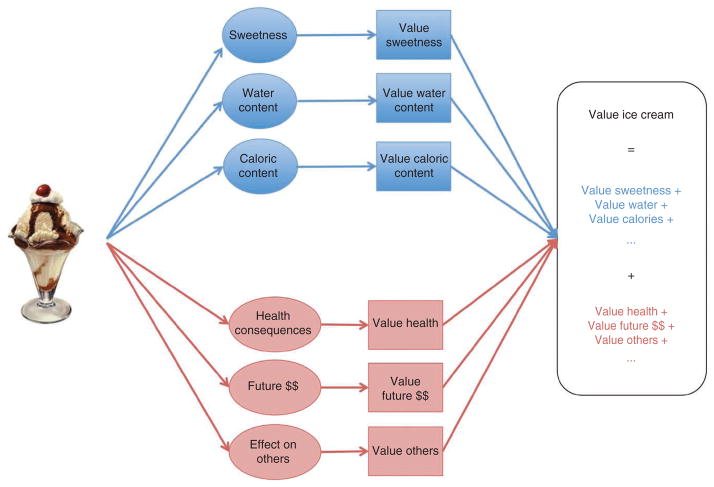Figure 2.
Description of how the goal-directed system can compute the value of a stimulus; for example, an ice-cream sundae. First, the item is mapped into the set of attributes that describe it. Second, a value is assigned to each attribute based on the current physiological state and the pleasure or pain associated with consumption of that attribute in the past. Third, the attribute values are integrated to compute an overall value for the item. There are two classes of attributes: basic attributes (such as sweetness or taste quality, depicted in blue) that are taken into account by all decision-makers and more ‘abstract’ attributes (such as health, depicted in red) that are only taken into account by those who make healthy choices. We emphasize that the actual attributes used by the goal-directed system have not been identified, and the ones highlighted here were chosen solely for the purpose of providing an example.

